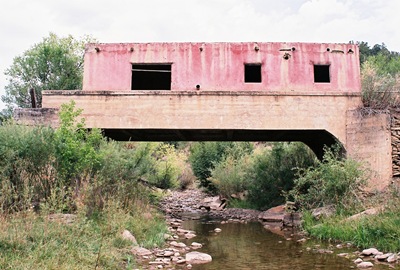
We’re gonna leave New Mexico for a bit and head into southern Colorado. It’s interesting, because as soon as you enter Colorado you know you’re in a different place. The same is true of Arizona. I find it hard to believe that the surveyors that marked out state boundaries across the West based them largely on landscape, but southern Colorado is definitely not New Mexico. Colorado also has its own thing going when it comes to what we check out here at City of Dust. So, let’s have a look at Colorado State Highway 12, also known as the Highway of Legends and considered to traverse some of the finest mountain countryside in the U.S. But note that this is only the southeastern portion of the Scenic Byway, through the Purgatoire (“picketwire” if you're an English fur trapper) River Valley. On this visit, time constraints prevented a full circuit north through the Cuchara Pass and on into La Veta. Bummer.
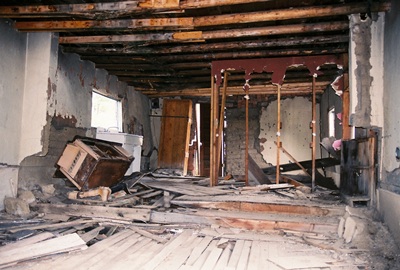
Generally, I think people drive the Highway of Legends heading west out of Trinidad, but we’re going to run it backwards, starting at what has been called the most-photographed and most-painted house in Las Animas County, the House on the Bridge in Vigil. I guess I’ll add a few more shots to the tally. The town of Vigil was settled by Juan Vigil in the 1860’s and incorporated in 1890. The post office operated until 1920, but not much has been going on since then. In 1918, the original road east from Vigil to Stonewall was re-routed and a small bridge over the North Fork of the Purgatoire River was orphaned. Joseph E. Martinez, a state senator, was half-brother to Charles Vigil, the property owner, and built a little house on the bridge. Marcus Vigil, Charles’ brother, rebuilt the house at some point and that’s what remains now. It’s very quaint and must’ve been a nice place to live, with the burbling river (um, maybe "creek" is a better term now) below and mountains all around. There aren’t many neighbors either. That's it in the two photos above.
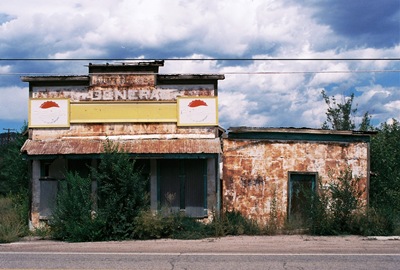
Heading east we arrive shortly at Weston, originally known as Los Sisneros after Juan Sisneros, a rancher who settled in the area in the 1880’s. A post office was built in 1889 and the town was renamed after the postmaster, Bert Weston. At the turn of the 20th Century, Weston was the supply base for the Rocky Mountain Timber Company. Currently, there’s an abandoned general store. But the North and South Forks of the Purgatoire River meet here and the majestic Sangre de Cristo Mountains loom in the distance. The name, translated as “Blood of Christ,” comes from Spanish explorers who saw that the morning sun turned the peaks red. There’s a story about a prospector who came to town out of the Sangre de Cristo’s once a year with a large nugget with which he bought supplies for another full year. The prospector said that he used the red morning light to find his mine high up along the tree line. When he died without revealing the mine’s location, many men tried fruitlessly to find “gold where the snow turns to blood.”
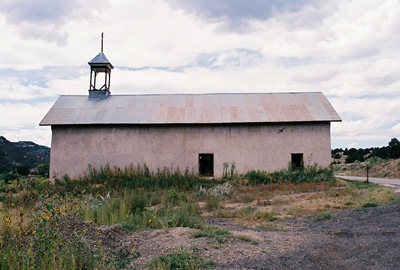
Throughout the Purgatoire Valley are numerous old churches. The one above is in Segundo, an old coal mining town. Segundo was founded about 1900 and the Colorado and Wyoming railroad made its operating headquarters here in 1901, constructing a five-stall roundhouse. At one point, Segundo processed more coal than anyplace west of Chicago, claiming 800 ovens in which moisture, sulfur, and phosphorus were burned off to make coke, which was especially desirable for smelting. Now it's delightfully deserted, relatively speaking.
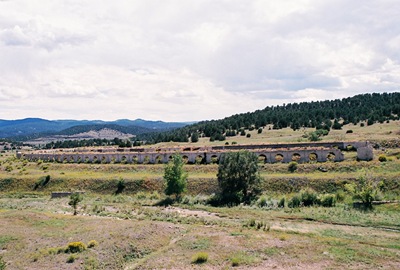
Coal was a pretty big deal in the Purgatoire Valley, near the mouth of which sits the aptly-named Cokedale. Founded in 1907 by the American Smelting and Refining Company (ASRC), by 1909 Cokedale had a population of 1,500 and 350 coking ovens. In 1947, the ASRC shut down and company houses were sold to residents for $100 per room and $50 per lot. Because many residents purchased their homes (and despite many houses being bulldozed), Cokedale is considered the best preserved coal mining camp in Colorado and is on the National Register of Historic Places. Across from the rows of old ovens outside of town, steam still rises from slag heaps, the last bit of mining activity that remains.
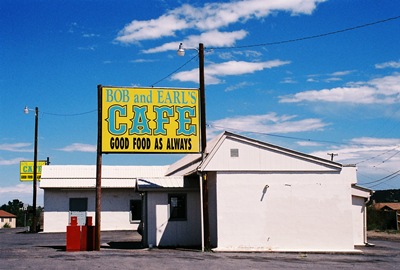
From Cokedale it’s just a few miles back to a good meal in Trinidad, which is worthy of its own post. But whether it will be the NEXT post I haven’t quite decided.
Information for this post was swiped from Sangres.com and Trinidadco.com.
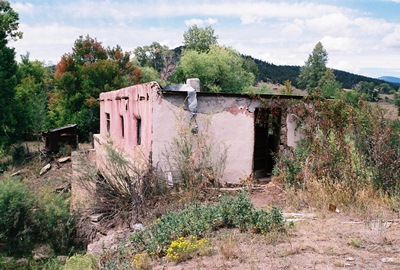
OCTOBER 2013 UPDATE: Sometimes people contact me personally and their recollections are so interesting that I ask if I can post their stories directly on City of Dust. This time, Mandy W. has graciously agreed to let me pass along both her memories of growing up for several years in the House on the Bridge--also known as Bridgehouse, apparently--AND some great vintage photos circa 1974:
"I just read your piece on the Bridgehouse near Weston, CO. I lived there from ages 4-10, then we moved up Wet Canyon to a house my dad built up there. We went to school at Weston Elementary, which is now closed. Thank you for your history. We mostly only knew it as our childhood home, and had a difficult time sleeping once we moved up the Canyon because we no longer had our River to put us to sleep! It was a magical and difficult place to live..."
It's one of the best and strangest powers of the internet that I can post about an odd and fascinating abandoned house in rural southern Colorado and somebody who lived there can find the piece and send me their own photos and recollections. Very cool. Thanks again, Mandy.
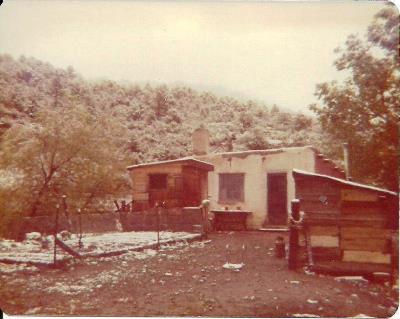
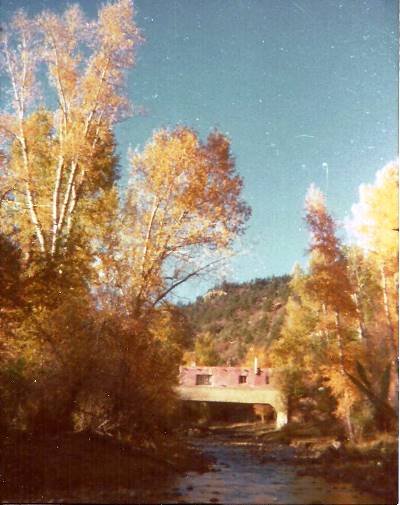
FEBRUARY 2014 UPDATE: Mandy W. has come through again with more information regarding the construction of Bridgehouse, where her family lived for a few years in the 1970's. Her dad filled in some of the story. I've never seen the construction dates elsewhere.
"Bridgehouse was built in 1941 in two stages. The highway used to go up by Vigil, but was moved to where it currently runs (Highway 12). The bridge itself was built in 1918. My dad rented it from 1971-1977 for $50/month but worked off the rent! He's not sure if anyone else lived in it besides an artist who was there prior to us."
Many thanks to Mandy for filling in some more of the history of her old home.
APRIL 2014 UPDATE: Below is another piece of Bridgehouse history, kindly submitted by V.J.A.
"After reading everything you posted about Bridgehouse, I just have to add what I know to the story. Around 1966/1967 my great grandparents, Bacilio and Mary Garcia, lived in the house. Like Mandy's father, Grandpa Bacilio was also a ranch hand for the property owner. Although they only lived there for a year or so my mother-in-law, Lena Guzman, has memories of playing in the creek under the bridge.
"It's not much but it at least adds to the timeline."
And so it does! Thanks very much, V.J.